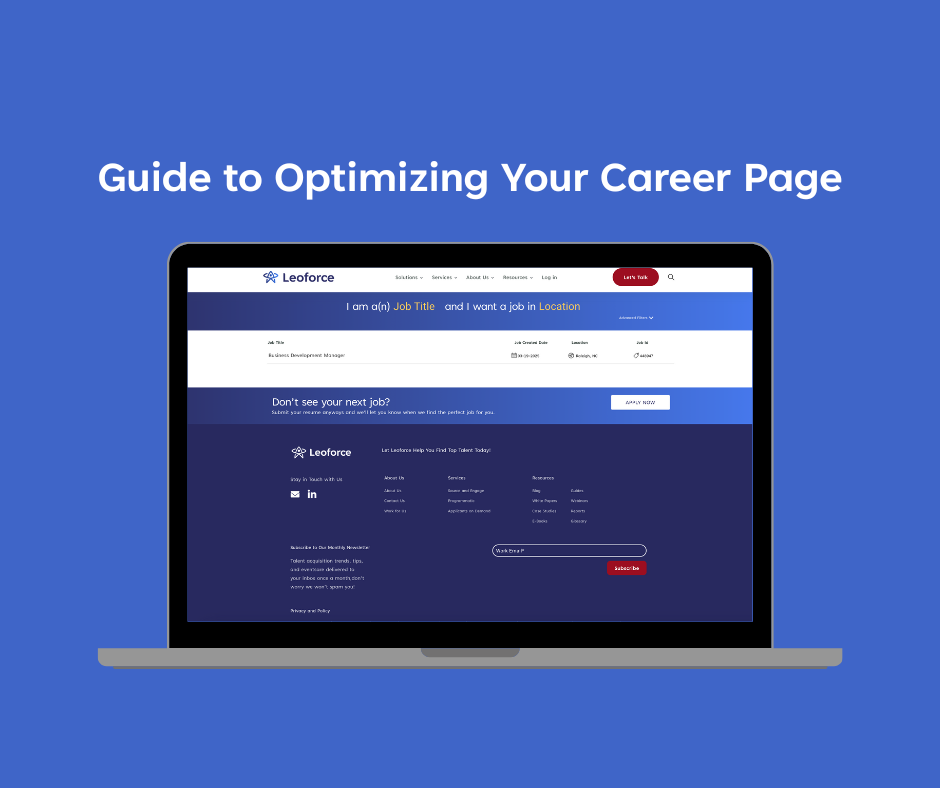What are candidates looking for in a work culture?

ON A WHIM, OUR WRITER GOOGLE SEARCHED THE PHRASE, “HOW MANY PEOPLE HATE THEIR JOB?”
The results were baffling. Gallup, in its State of the Global Workplace: 2022 report, stated employees have reported experiencing astonishing rates of dissatisfaction, disengagement and unhappiness at work.
In the United States alone, 50% of workers described their feelings at work as stressed, 41% as being worried, 22% as sad, and 18% as angry.
A recent statistic released on LinkedIn revealed that only 30% of the global workforce is actively looking for jobs. Of the remaining 70% passive workforce, a whopping 87% is open to finding better job opportunities. This begs an important question. What are candidates looking for in a work culture?
For starters, let’s understand what is work culture. An article in Forbes defined workplace culture as a collective of shared values, belief systems, attitudes experienced by people in a workplace. In a nutshell, work culture is the environment that surrounds a person for a larger part of their day.
It is common knowledge that organisations in the United States, as well as the rest of the world, tend to follow a general framework when it comes to establishing organisational culture. Any organisation’s culture, big or small, is likely to be influenced by three important components. These three components are an organisation’s management policies, the people who work there and their day-to-day operational environment. In this article, we deep dive into how each of these components are likely to impact and influence organisational culture and what attracts a job seeker towards an organisation.
Let’s paint you a word picture
Think of a pyramid’s structure. Now split that pyramid into three primary building blocks. The bottom layer, the middle layer and the top layer. Each layer holds a certain degree of fundamental importance that shapes an organisation’s work culture. Let’s explore how each of these levels attract job seekers.
The job
The bottom layer of a job seeker’s pyramid comprises of day to day operations. Simply put, the job. When an organisation feeds a potential candidate’s passion, they climb several spots on a job seeker’s radar. The job is the reason why a job seeker files out an application for an interview. It is extremely important for a job seeker to be excited by the job they seek. A study shows that 65% of Americans are satisfied with their work, while only 20% of them are passionate about what their careers. Passion for the job is directly correlated with productivity. Let’s give you a for instance. Pilots love the thrill of flying, while techies can write code all day. Now switch their job roles and you will have a bored pilot and a software engineer who is (probably) terrified. But in all seriousness, the work or the job can be considered as the lynchpin that sets the ball rolling for most candidates seeking employment.
The people
An old but commonly used phrase in work spaces and we’re sure you’ve heard of it too, people don’t quit their jobs, they quit their managers. Obviously, there is some truth to this statement because a 2022 survey report revealed that 57% of employees hand in their resignation letters because of bad managers. That bring us to our next point of inquiry. The impact of human behaviour on work culture.
We know that humans are social animals. This means that the people around them can have a direct and rather huge impact on their intellectual as well as emotional capabilities. Candidates are looking for supervisors and managers who commit to their role beyond performance feedback and reviews.
A manager’s ability to guide, teach and nurture employees directly impacts an organisation’s culture. Employees are happier when their supervisors are approachable, transparent and open to ideas. Managers who are rigid, dismissive and have a tendency to point fingers and push blame are likely to increase the chances of employees quitting their jobs.
Its not just managers who affect work culture. The average person spends 81,396 hours at work. It is only natural that employees look to each other for a sense of camaraderie. In fact, research shows that people with friends at work tend to have higher productivity. 60% of employees consider their colleagues to be the biggest contributors to job happiness.
The policies
For the final factor, we need to take a spin back to our pyramid analogy. It is said that the pyramids are visible from outer space. In the context of an organisation’s work culture, the top of the pyramid or the capstone is something that has the most visibility. Because it is at the top, policies form a focal point and tend to have a profound impact on work culture. Organisational policies are designed to seep into work culture, shaping employee perception and affecting the degree of job satisfaction as well as the retention rate.
When an organisation designs it policies right, the degree of job satisfaction among employees is considerably higher. Happy employees tend to work more, innovate better and stay with organisations for longer. More survey reports state that employees who are well taken care of tend to be happier at work. While free meals, life and health insurance, day care facilities, and memberships to clubs and gyms are great ways to elevate work culture, their degree of attraction will eventually depreciate. Equal opportunities, job security, a nurturing environment and work life balance, on the other hand will go a long way in keeping existing employees and attracting like minded potentials.
Apart from the three factors that make up an organisation’s work culture, a hidden or bonus factor affecting the culture are candidates themselves. A candidate’s ability to adapt to an organisation; their personality, attitude and skillset also play a huge role in impacting an organisation’s work culture.
About 74% of US employees claim company culture is important for job satisfaction. If the last three years have taught us anything, it’s that job seekers are looking for more than just a salary hike and incentives while looking to land their (next) dream job. It is safe to say that the rise in remote and hybrid work settings has led candidates to delve deep into their expectations from a workplace.
Today, job seekers want more. More, in this context, is not limited to a great salary package. It refers to a healthy and nurturing environment (both on campus and remote), it refers to opportunities to grow horizontally as well as vertically. Most importantly, job seekers are hunting for an organisational culture that promotes equality, inclusivity and delivers a higher degree of job satisfaction.





